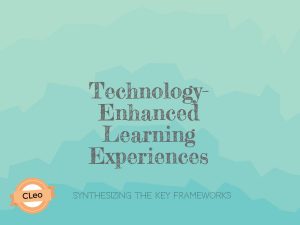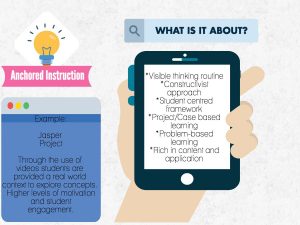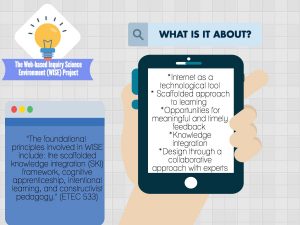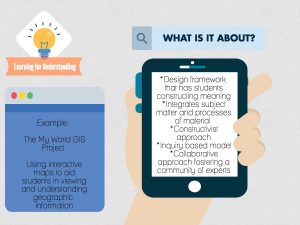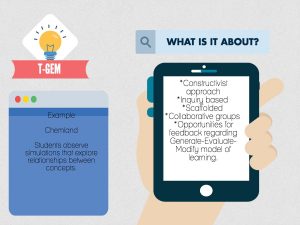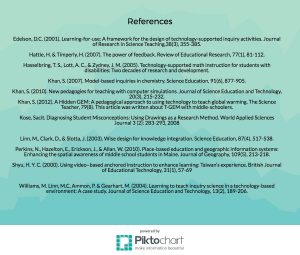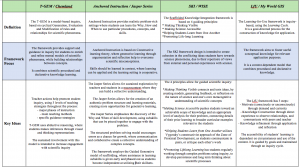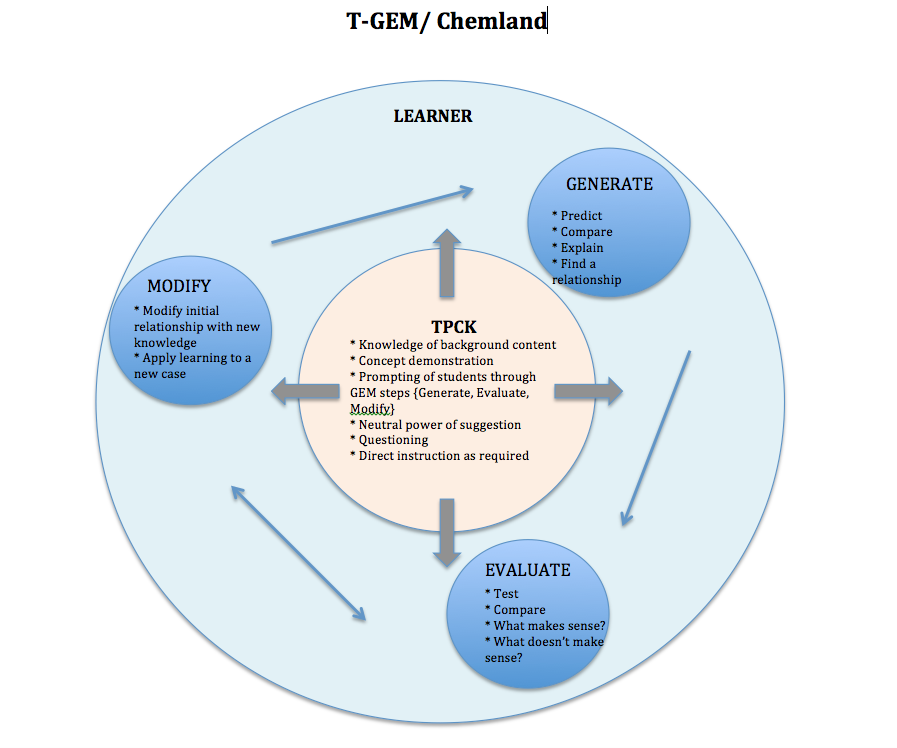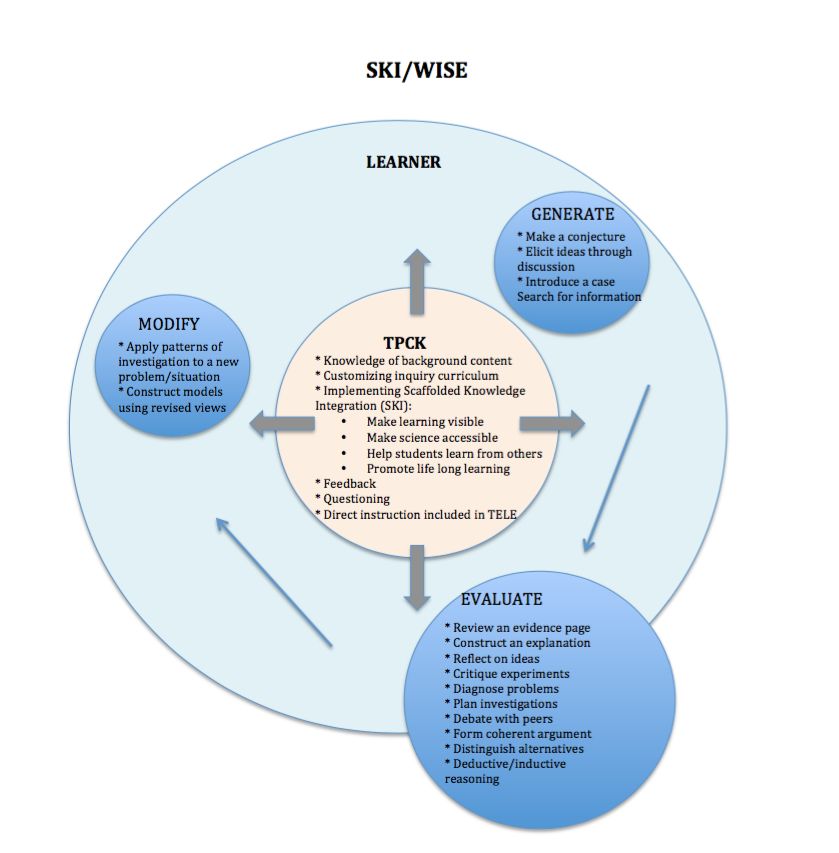I created this 3D space to display my thoughts, use your mouse to look around, here. Looking back at our posts through this session I have a better understanding of how each theory uses technology to place the role of the teacher into that of designer and the student into knowledge creator. All theories are underpinned by the idea that we as teachers are at a point of major change where our role is becoming vastly different than it traditionally has been. Technology has changed the way information is exchanged and knowledge is gained. We now have the tools to give our students power over their own learning, to help guide them in a direction that is meaningful and authentic to their lived experiences.
Overall LfU is an excellent theory that can be applied across all other theories as it’s step process is a well designed framework for designing lessons.
First in LfU looking at fostering motivation and creating demand “the learner must be motivated to learn the specific content or skills at hand based on a recognition of the usefulness of that content beyond the learning environment.(Edelson, D.C. 2001) This is where the WISE platform is an excellent tool for the delivery of online lessons, as it promotes autonomous discovery and structured guidance in the zone of proximal development. As Linn, Clark & Slotta (2003) state “if steps are too precise, resembling a recipe, then students will fail to engage in inquiry. If steps are too broad, then students will flounder and become distracted.” Digital simulations and models embedded in the WISE framework can increase intrinsic motivation and help to level the playing field with students who learn in modalities outside traditional methods.
Secondly in the LFU framework the program itself must elicit curiosity. This is where Anchored Instruction can be applied “Video based presentation-moving images, access poor readers or ESL, dynamic images help students imagine the problem”(Cognition and Technology Group at Vanderbilt 1992b). As I stated “While the Jasper project seems dated by our present standards the basic premise that delivering knowledge to students and promoting critical thinking skills does not need to be a text based delivery system is innovative. Visual representation of problems, especially in a dynamic moving form is a multimodal approach that will reach a much broader spectrum in the class.” VR is the next step in this process and is now accessible through Google Cardboard and creation tools like CoSpaces.
Thirdly Collaboration or fostering knowledge construction is two process under the LfU model “(a)observation through first hand experience, and (b) reception through communication with others”(Edelson, D.C. 2001). This also fits in with Anchored Instruction as that theory states “Our findings indicate that, in the absence of instruction, some students will interact with their peers in ways that promote exploration of the problem space and its solution.”(Vye, Goldman,Voss,.; Hmelo, Williams, 1997) plays a key role in anchored instruction as well as constructivism. As does intrinsic motivation through peer interaction “In work with teachers we consistently find that the opportunity to teach their peers is highly motivating and develops a strong learning community among the teachers.”(Biswas, Schwartz & Bransford 2001).
The final two phases are reflection and application. This is where I believe the idea of Evaluate and Modify in T-GEM can be applied. Students can look at what they have created and based on peer and self evaluation can decide on a path that will lead to modification and improvement on their previous design. Encouraging metacognition and self evaluation are key ingredients to creating self regulated learners. This leads to one of the key ideas in Anchored instruction that must be mentioned, and that is interdisciplinary inquiry learning. Looking back at what I stated “To develop a student’s curiosity about the world around us core subjects should not be taught in isolation. Rather they need to be weaved and combined to present the students with the rich tapestry that real world situations present in everyday life.” I think as whole subject integration is a skill as teachers we should all be striving for as it is only inside our classroom walls that subjects sit in isolation. Students experiences in their everyday lives do not reflect the rigid curriculum separation that we practice in our classrooms.
References
Biswas, G. Schwartz, D. Bransford, J. & The Teachable Agent Group at Vanderbilt (TAG-V) (2001). Technology support for complex problem solving: From SAD environments to AI. In K.D. Forbus and P.J. Feltovich (Eds.)Smart Machines in Education: The Coming Revolution in Education Technology. AAAI/MIT Press, Menlo, Park, CA. [Retrieved October 22, 2012
Bodzin, A. M., Anastasio, D., & Kulo, V. (2014). Designing Google Earth activities for learning Earth and environmental science. In Teaching science and investigating environmental issues with geospatial technology (pp. 213-232). Springer Netherlands.
Cognition and Technology Group at Vanderbilt (1992b). The Jasper series as an example of anchored instruction: Theory, program, description, and assessment data. Educational Psychologist, 27(3), 291-315.
Edelson, D.C. (2001). Learning-for-use: A framework for the design of technology-supported inquiry activities. Journal of Research in Science Teaching,38(3), 355-385
James D. Slotta and Marcia C. Linn. 2009. WISE Science: Web-Based Inquiry in the Classroom. Teachers College Press, New York, NY, USA
Linn, M., Clark, D., & Slotta, J. (2003). Wise design for knowledge integration. Science Education, 87(4), 517-538.
Khan, S. (2010). New pedagogies for teaching with computer simulations. Journal of Science Education and Technology, 20(3), 215-232.
Vye, Nancy J.; Goldman, Susan R.; Voss, James F.; Hmelo, Cindy; Williams, Susan (1997). Complex mathematical problem solving by individuals and dyads

